You must be logged in to rate content!
7 minute(s) of a 113 minute read
7-30-2014
The nickel literally opened up for the water flow and closed when the water pressure was not applied.
I thought that we should do a trick which might had worked if done right.
I decided to thoroughly heat the sprayed nickel so it'd bind all together.
I tried to find some cast iron welder/brazer who could help me out, and luckily I've found one.
The trick almost worked, the head did hold some pressure, while still leaking - now under the nickel. So it was again adhesion problem. ![]()
So I asked him to fix the head, he took some time and got to try.
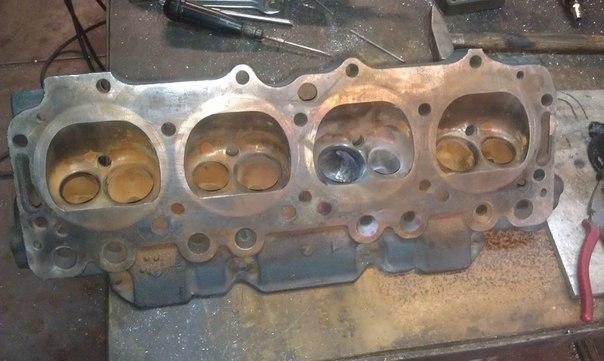
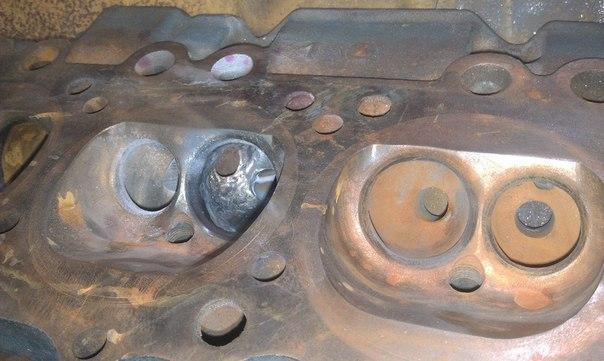
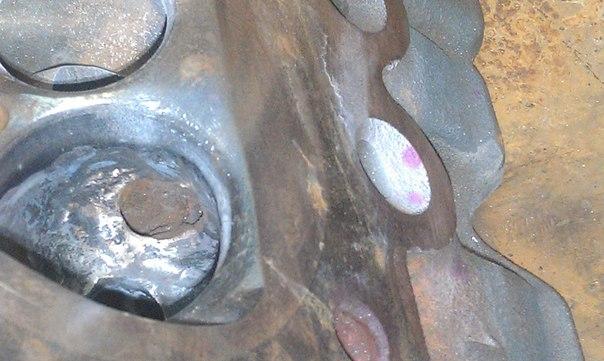
That hole looked scary as hell!!! He said it was all rusty so it couldn't have been fixed.
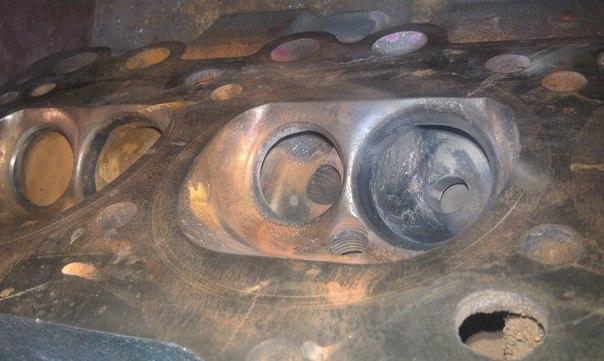
Later the cast iron was up to show its character. This is a powder method to check for small cracks. The purple are the cracks.

The cracks only appeared on 2nd-3rd day AFTER welding! The next pics were not done at the same time! Each pic was done after the port was cleaned, welded and checked after 2-3 days.

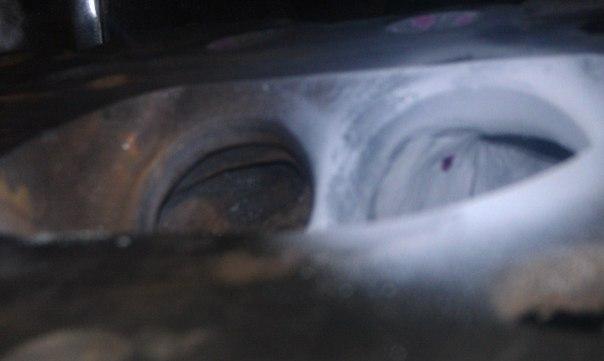
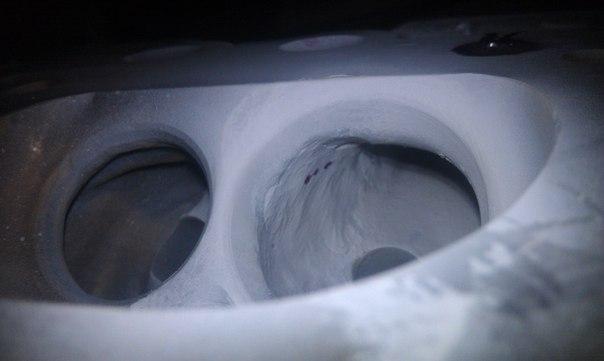

Oh, man, he was up to give up! Seriously! ![]()
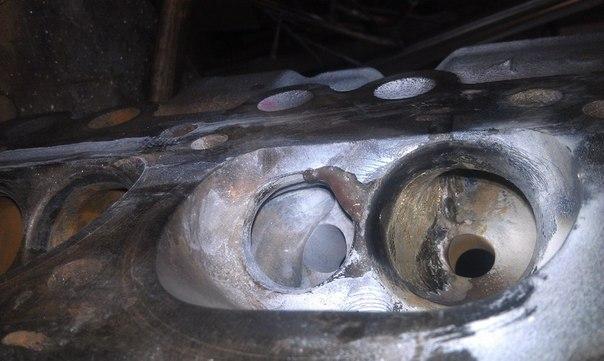
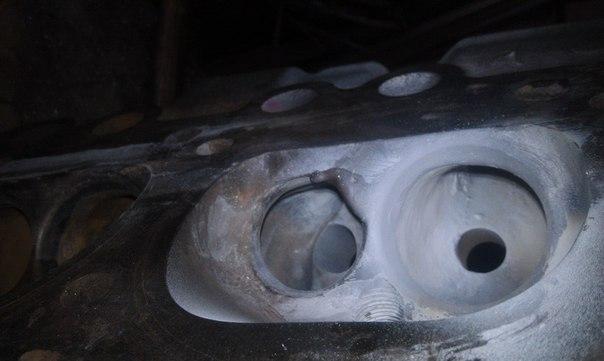
That's some flux (fusion agent), don't worry.
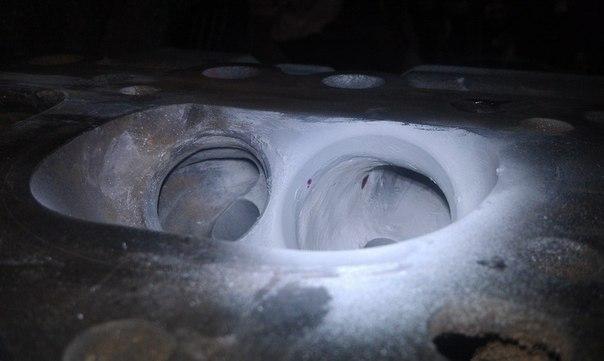
And so my friend from Australia told me that we should heat the head to glowing red and weld/braze it, so no cracks would appear.
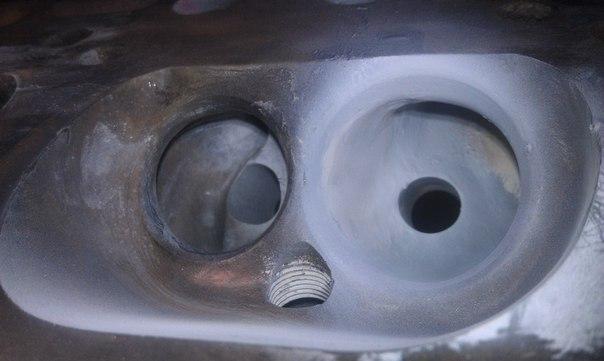
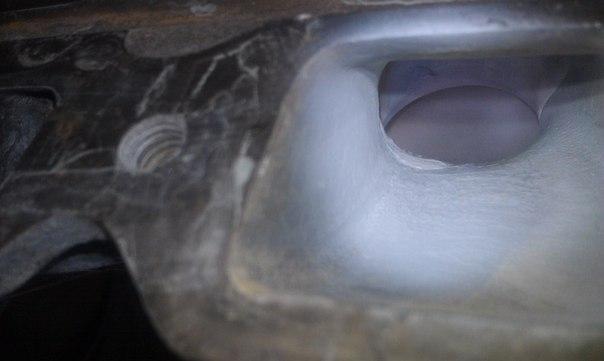
And it worked! The final coat was done with hot silver-copper brazing.
The head passed the pressure test! ![]()
____________________
Meanwhile I've done the exhaust manifolds.
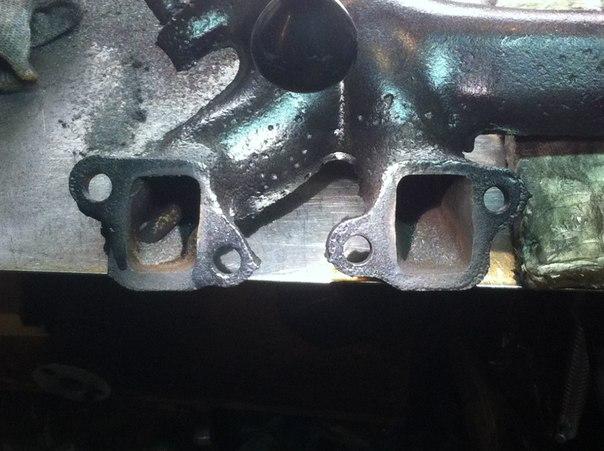
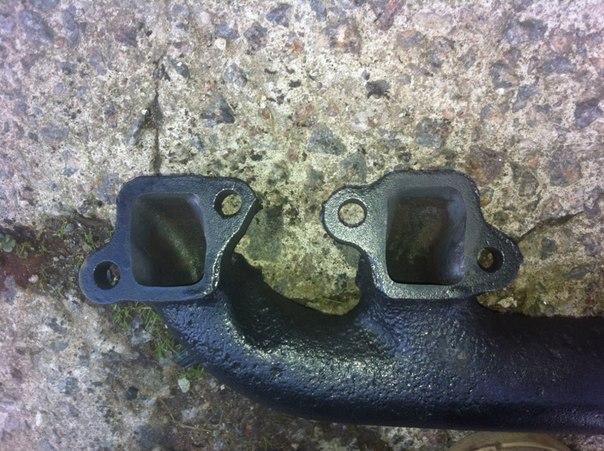

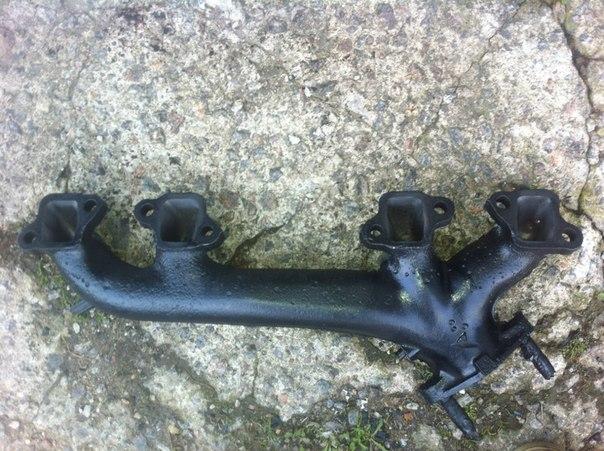
The point was to increase cross-section to slightly bigger than exhaust port, yet provid smooth turns and remove the choke heater from the right manifold, which restricts flow.
_______________________
After the head got back to me I took some time to ressurect it from the dead (teh rusty-dusty hands of cast iron death) and we got onto our final straight.
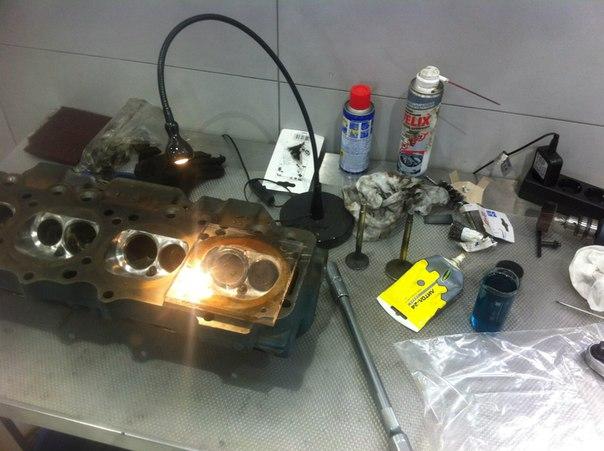
I took a burette to check the combustion chamber volume.
I've got a range of 132 ccs +/- 1 cc. Which is somewhat less than 1% difference!
I'm an idealist myself, but keeping in mind its huge volume and 0.76% is okay for a street driven nailhead. Due to dual plane manifold you need a very big luck to fill all cylinder at 100% -the case when this difference will begin to matter... So I went on for the seats!
Actually, it was again difficult to get the Nailhead done, because only one company in St.Petersburg had a valve machine other than Serdi. Serdi is a well known and respected valve seat cutter machine, but its cutting tooth chuck is waaay too big to fit in the Nailhead combustion chamber, so they can't reach the seats.
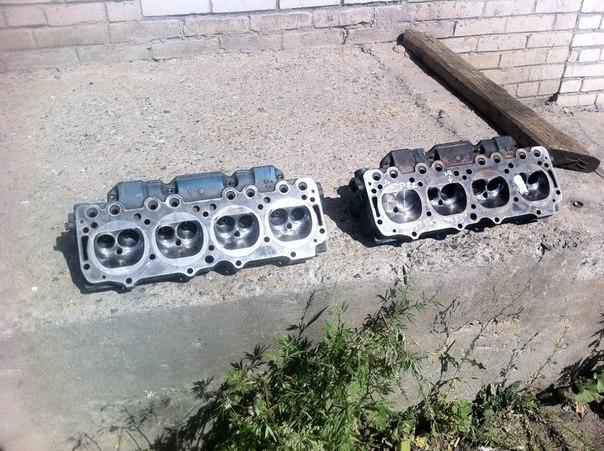
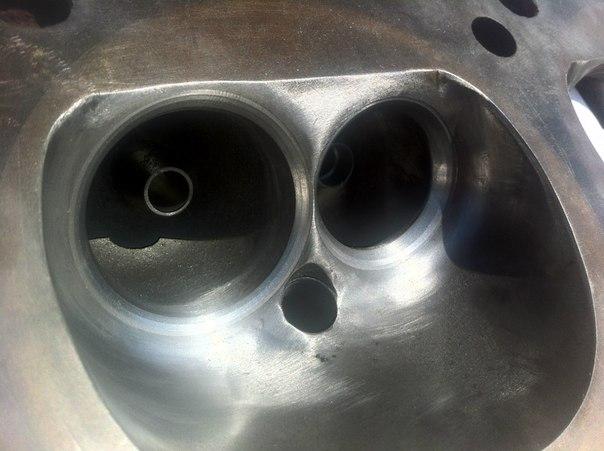
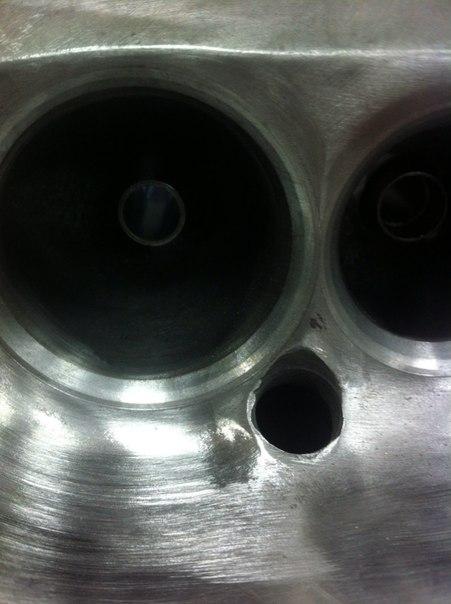
(The combustion chamber was left rough while cutting seats, I wanted to get the final polishing done afterwards)
As for the seats, I went on like that:
I've read what my performance bible said - The Chevrolet Racing Engine by Bill Jenkins - I have a kind of an ultimate respect for that book as it's amazingly deep and detailed, so detailed that you can't get it right from the first time! hehe!
He used 30-45-60-90 degree cut on the intake, each angle except 30 and 45 was at least 0.100 in wide in order to aid the air to turn. The width of 45 degree cut was recommended at 0.085-0.090 in (about 2.2 mm) for the intake, and the exhaust 45 was about 0.065-0.070 in (about 1.7 mm). At first, I was to follow his advice, especially in valve seat width of the intake, but the factory Buick Repair Manual said that 0.075 in is not a desirable width for intake seats. Okay, so I got 0.065-0.070 in (1.7 mm) width on both int and exh 45 degree cuts.
Regarding the top angle, I decided to use 37.5 top cut, because 30 angle could leave a much deep protrusion in the chamber, which I absolutely hate. I wasn't over satisfied with the 37.5 degree cut and I think a 40 degree cut could benefit a little more. It could eliminate the top cut step on the valve seat, so the air would gradually turn inside the combustion chamber. But maybe next time! ![]()
____________________
Finishing the intake plenum modifications.

It has quiet a big mismatch on the ports and it's very very important to get it ported. I'll do a video once it's done (very soon!).
Comments
Sign up and be part of
The Ultimate Gearhead
Encyclopedia®
Join our mailing list to see the best
Builds, DIYs, and Rides.